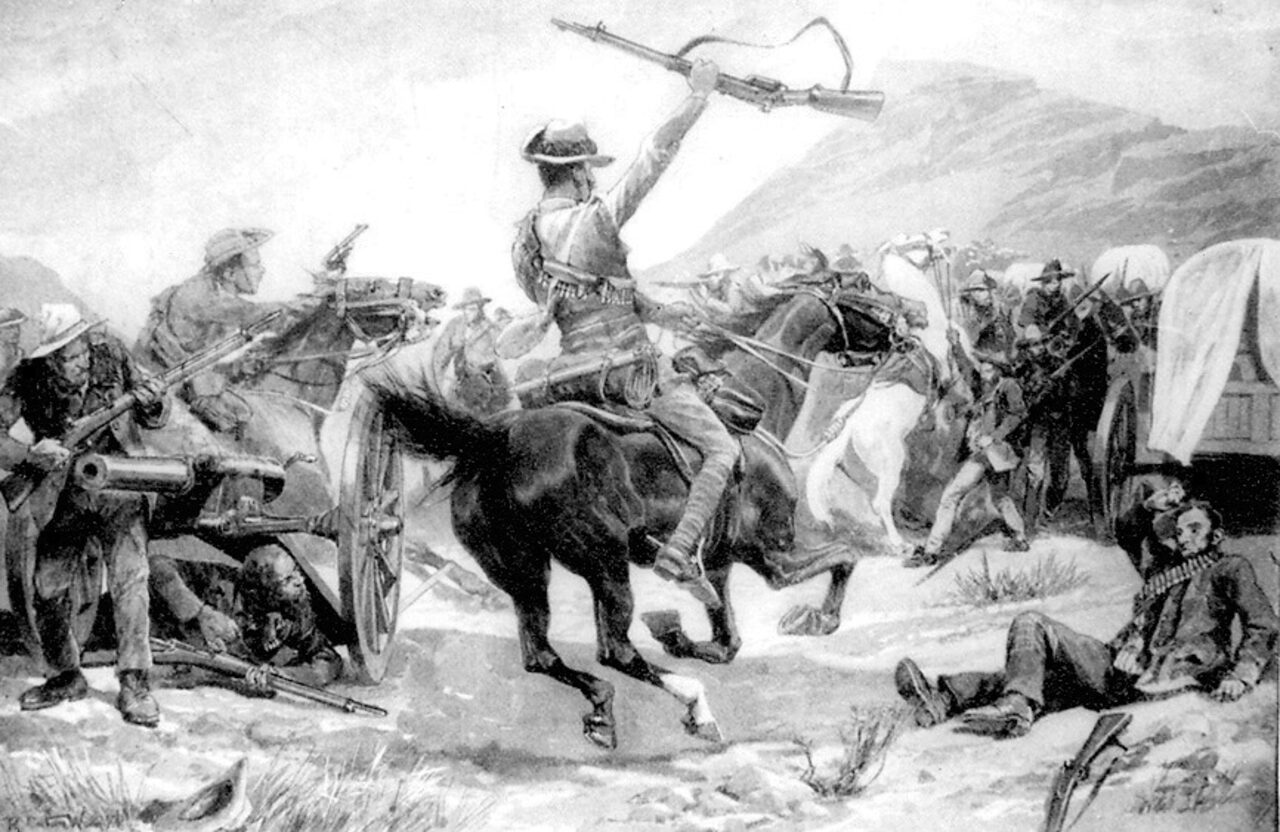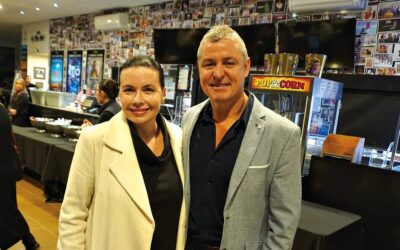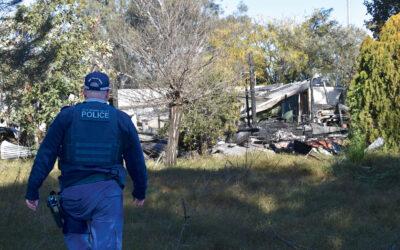With Australian forces often involved in overseas conflicts, the Militia has played an important role in the protection of borders and local communities.
The term Australian Militia refers to the part-time, reserve component of the Australian Army, historically known as the Citizen Military Forces (CMF) or Australian Citizen Military Force (ACMF).
Moves to form a Militia unit in the colony began in 1884 and the following year, the colony offered troops for service in the Sudan War. On March 3, 1884, NSW sent a contingent of 762 volunteers to the Sudan. They were away for four months, returning in June 1885.
Mounted horsemen from the Gunnedah district answered the British Empire’s call to arms when the Boer Republic of Transvaal, South Africa, declared war on Britain in 1899.
The Gunnedah troop was part of E Squadron in 1901 and played a significant role in Australia’s defence, particularly during World War II. It was comprised of citizen soldiers who trained and served on a part-time basis, supplementing the full-time, regular army (initially known as the Permanent Military).
As the original colony, New South Wales was deeply involved in events in Great Britain and as Queen Victoria approached the golden jubilee of her reign in 1887, grand plans evolved for celebrations in all British Empire countries.
All over the country, young Australians volunteered for service in a far-away land, Australia’s participation eventually totalling 848 officers and 15,327 other ranks, with 16,314 horses. The exploits of the Australian troops against the Boers’ guerrilla warfare created great patriotic fervour but the English style of combat, with foot soldiers trailing heavy field guns, was a failure. They suffered heavy losses against the Boers, who were skilled marksmen, fighting on familiar territory.
The Australian Mounted Troops, however, were magnificently effective over great distances in this guerrilla-type warfare.
In 1897 a wave of patriotism swept the Gunnedah district and a troop of the Australian Light Horse, comprising 36 men, was formed in Gunnedah.
An all-day parade was held one Saturday per month, either on Kitchener park or Black Jack hill.
Beside each trooper’s horse and saddle, the uniform was most spectacular – olive green in colour, consisting of a jacket with belt and a one-inch black strip down each trouser leg, puttees, military spurs and olive-green hat with a bunch of, feathers, 12-inches long stuck into the left side just above the upturned rim.
The drummer, bugler and any band members always wore bright red feathers in their slouch hats. Suspended from the military saddles on each side was a carbine and a sword with a cape strapped on the front.
The Gunnedah troop was part of E Squadron of the Australian Light Horse, which comprised Armidale, Tamworth, Boggabri and Gunnedah. Later these towns became linked to Quirindi and Scone squadrons.
The first four-day camp was held at the property Booloocooroo, owned by Liet. Thomas Henry Hall Goodwin, in October 1898. Visiting military officers and staff included Lieut. General JDP French, Lieut. RC McKenzie, Lieut. Adjutant Thompson, Warrant Officer Bond and assistant (batman) Private Bray.
Rev EH Woodger conducted a church parade on the Sunday, a Mrs McCosker, of the Paragon Hotel conducted the canteen and Mrs Frank Hind ran the refreshment provision room.
In January 1899, the Australian Light Horse Regiments held a camp at Curradooley, Bungendore, under the command of Colonel JAK Mackay CB. Attending from Gunnedah troop were Lieut. TT Willsallen and Lieut. JH Clarke.
In November 1899, an encampment was held at Scone. The Governor Earl Beauchamp attended with Colonel Mackay and Lieut. General French. Members of Gunnedah’s troop of the Australian Light Horse included Lieut. Dr HE Lee, Lieut THH Goodwin, TL Willsallen, F. Hamilton, WN Fewkes, W Pritchard, AE Darcey, C. Landeryou, A. Carmichael, D. Carmichael, G. French, W. French, W. Rodd, J. Smith, J. McKenzie, W. Kelly, J. Sheehan, W. Montgomerie, J. Jarmain Snr, A. Jarmain Snr, H. Jarmain, A. Jarmain, W. McGuirk, G. Geach, G. Howes, G. Nowland, A. Nowland, J. Pole, G. Courtney, P. Phillips, N. Berry, L. Parnell, W. O’Rourke and C. Hunt.
Some of these men were to serve in the Boer War campaign as well as other soldiers from the district.
Many Gunnedah and district men were among those who volunteered for service.The list included Trooper AE Darcey (wounded at Kroonstadt, May 10, 1901), Sgt Major Arnold, Sgt Frank Hamilton, Sgt V. Newell and Captain W. Newton Fewkes, who was mentioned in dispatches by Lord Kitchener for conspicuous gallantry in the field and was a nephew of PR Pritchard, first town clerk of Gunnedah.
Others were Captain WE Peard, Troopers Applebee, FF Bashford, A, Berriman, J. (Ike) Bewley (killed February 1, 1902 at Bloemfontein), J. Brosi (stayed in South Africa after the war and was killed in a mining accident on January 8, 1906), John Cobb (he managed Bando Station with his brother Ken for the White family before enlisting in Queensland – he died of Enteric Fever in 1901), G. Courtney, A. Donnelly, C. Heine, C. Hunter (invalided in England and later presented to Her Majesty, Queen Victoria), Jackson, JA Jones, W. Kensell, J. McCormack, RH Peard, F. Pike and RC Pole.
Among the casualties was Lieutenant Keith K. Mackellar, who was killed in action. He was the brother of Dorothea, who became one of Australia’s best- known poets.
Keith Mackellar did not live in the Gunnedah district but the local link was established when his father Charles purchased Kurrumbede in 1905.
Others who served in the South African campaign and later lived at Gunnedah were CP Erratt (Dunadee Creek), Dave Martin, Ted Vinall and Frederick Charles Brown (known as Brownie).
Harry Harbord (The Breaker) Morant was working on Pullaming Station prior to joining the Australian Bushmen’s Forces in South Australia.
Much of the credit for organising the bushmen into a highly effective contingent was given to Breaker Morant’s employer and friend, Lieutenant JA Kenneth Mackay, of Pullaming Station.
The new cavalry volunteers raised by Colonel Mackay were real bushmen who, within 24 hours of arriving in camp, were marching in their myrtle-green uniforms, with all the steadiness and assurance of trained troops.
They were known as the First Australian Light Horse.
Colonel Mackay was formerly a member of the West Camden Light Horse and was given command of the new regiment, with Sergeant RR Thompson of the Lancers gazetted second Lieutenant and appointed adjutant.
According to a report from war correspondent for the Sydney Daily Telegraph, Frank Wilkinson, Colonel Mackay had promised two squadrons for the camp – but marched past with four squadrons and a band.
By 1900, the Australian Light Horse had 638 men and the four original squadrons had been increased to five. Wilkinson credited the success of the regiment to the untiring energy and enthusiasm of Colonel Mackay.
The first batch of 20 men who volunteered for service in the Transvaal were members of the Gunnedah Light Horse.

The Gunnedah troop of the First Australian Light Horse in camp at Scone in November 1899.
The men were addressed by Lieutenant Goodwin before a large crowd assembled at the Gunnedah Railway Station to bid them farewell, with patriotic singing and cheering.
Trooper Darcey rode 72 miles to be with them and the first Bushmen’s contingent left for South Africa on February 28, 1900. It was made up of 520 men in four squadrons. Men of the Australian Light Horse mostly linked up with the Mounted Rifles.
Sergeant Major Griffin of the Australian Light Horse was the first Australian to fall “in the service of the Empire” and Corporal F. Fitzpatrick was found severely wounded and died the next day.
For the remainder of the campaign, the Australian Light Horse was attached to Scotland’s Scots Greys.
In January 1900, a patriotic fund was formed in Gunnedah and TP Willsallen, of Gunnible, presented a team of six horses, for a gun team, to the government.
On Anniversary Day, 1900, the Gunnedah Light Horse held military sports and 40 pounds was raised for patriotic funds with a patriotic service the following Sunday in the School of Arts.
The war raged until 1902 when more forces were sent from England, and the Boers were finally obliged to sue for peace. Breaker Morant was also executed that year, with the tragic event having political consequences for all Australians. All future Australian military personnel were to remain under the control of their own Australian officers.
A function to welcome returned soldiers from the Boer War was held at the Gunnedah School of Arts in October 1901, in front of a large crowd.
The soldiers were presented with a medal by Colonel Mackay, who had been made a Commander of the Order of the Bath, in recognition of the success of the regiment.
In 1910, the Federal Government invited Lord Kitchener to visit Australia and advise on its military needs. Defence acts were resolved in parliament to establish the Duntroon Officer Training College and 12 naval ships were purchased from overseas loan borrowings. The naval armada sailed into Sydney on October 4, 1913.
Other recommendations were to introduce compulsory army training for all males aged between 18-26 years. This became very controversial and the conscription issue was put twice to a referendum and defeated both times.
The historical society has no records to show any military training was held in Gunnedah in the years between the Boer War and World War I but when war was declared on August 4, 1914, volunteers rushed to join up.
In the 1920s, closer settlement for returned servicemen brought many new families to the district but the task of establishing a property and then the Depression pushed everything else into the background.
In 1938 a squadron of the Australian Light Horse (ALH) was reformed in Gunnedah under the leadership of Major (Dr) Colin Anderson MC, a World War I veteran, and his deputy, Captain Alston Gregg, who was to lose his life in action at the front on January 14, 1942.
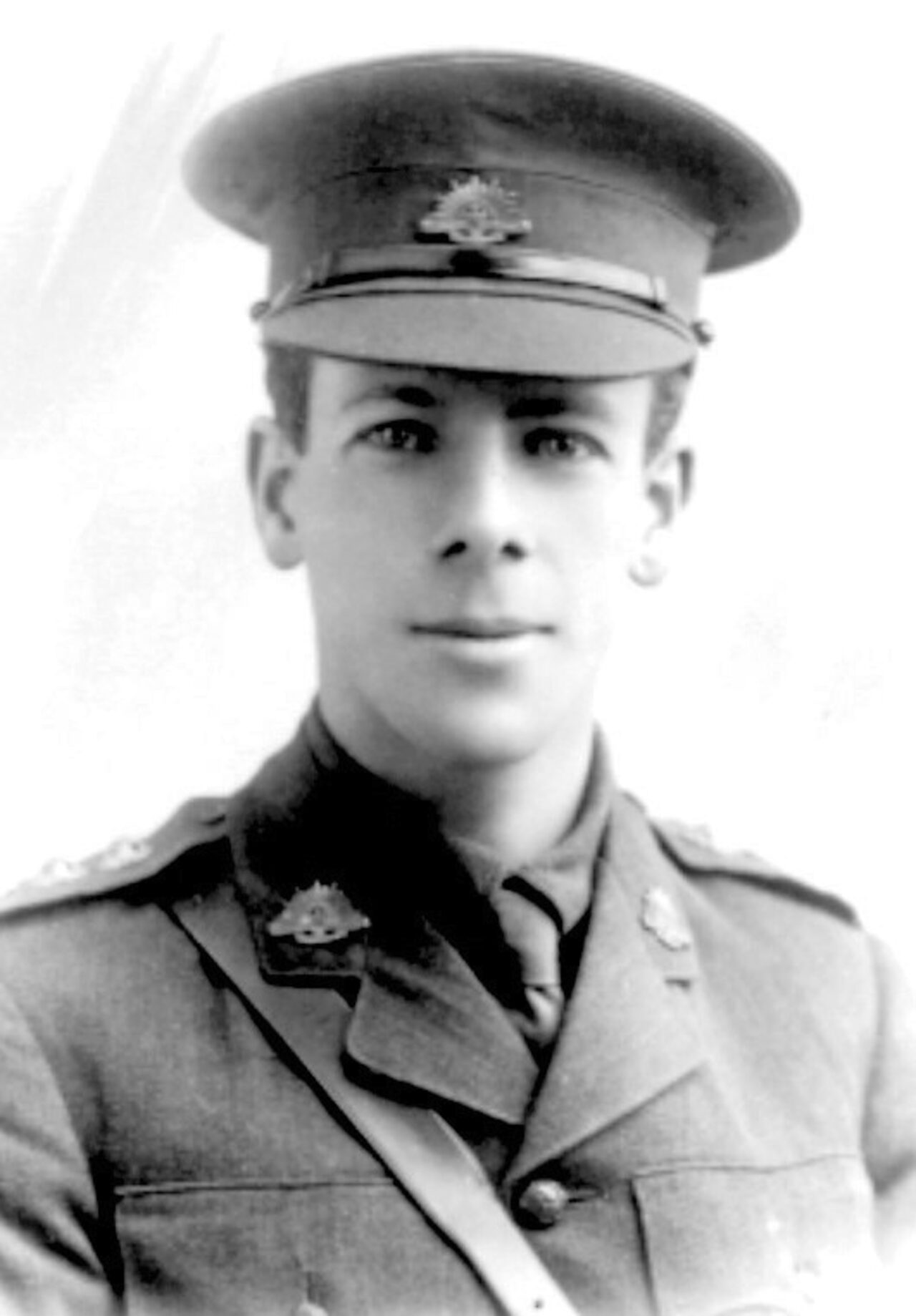
Colonel Dr Colin Anderson who was commanding officer for ALH 24 Regiment.
A full ALH regiment was established about six months later, with most towns in the North West brought together to form the 24th Gwydir Regiment.
Dr Colin Anderson, who had by then been promoted to Colonel, was placed in charge of the regiment, with Major G. Hole Hardie MC as second-in-command.
The regiment went into camp at Inverell Showground in January 1939 and again in November that year, two months after war was declared.
The 24th Gwydir also joined with the 12th New England Regiment in Camp Gostwyck, Uralla.
In 1940 Australia placed two infantry divisions overseas (the 6th and 7th) and as the situation deteriorated for the Allies, particularly in 1941, many ALH troopers joined the AIF, including the ill-fated 8th Division, which fell into the hands of the Japanese at Singapore on February 15, 1942.
The troops suffered terrible atrocities as prisoners-of-war and a large number died in captivity.
A brigade from the 9th Division was sent to the Middle East and two AIF brigades, based in England, were also dispatched to the Middle East to complete the 9th Division.
As the armoured fighting vehicles began replacing the horse regiments, the First Armoured Division formed in mid-1942, trained at Narrabri with Gunnedah the ordinance depot.
Many ALH troopers went into the AFV and other units stationed elsewhere in Australia. The ALH terminology remained, however, through mechanisation.
ALH troopers were also associated with the running of essential services such as farming, and mining.
Everyone 16 years and over was subject to manpower regulations under the National Security Act. These personnel were scheduled for intermittent training with the 6th Volunteer Defence Corps (VDC) with headquarters at Tamworth.
The 6th VDC battalion was stationed at centres in the Upper Hunter and on the Liverpool Plains. The VDC had to carry out a “scorched earth” policy if an invasion occurred. These units remained active until the end of 1943 when the tide was turning in favour of the Allies and Australia was no longer under threat.
Historical background:
Members of the Gunnedah ALH squadron were Lieut. Neil Carter, Sgt Jack Bicket, Sgt Jack McCann, Troopers Charlie Bush, Alan Andrews, Hector Andrews, Sam Bush, Doug Campbell, Noel Collier, Keith Erratt, Laurie Heath, Ted Hander- son, Reg Hobson, Colin Leys, Wilbur Morris, Doug Ramsay, Geoff Robson, Ross Rootes, Steve Staughton, Francis Stone, Bert Tudgey, and Harold Williamson (bugler).
The commanding officer commanding was Captain Alston Gregg.
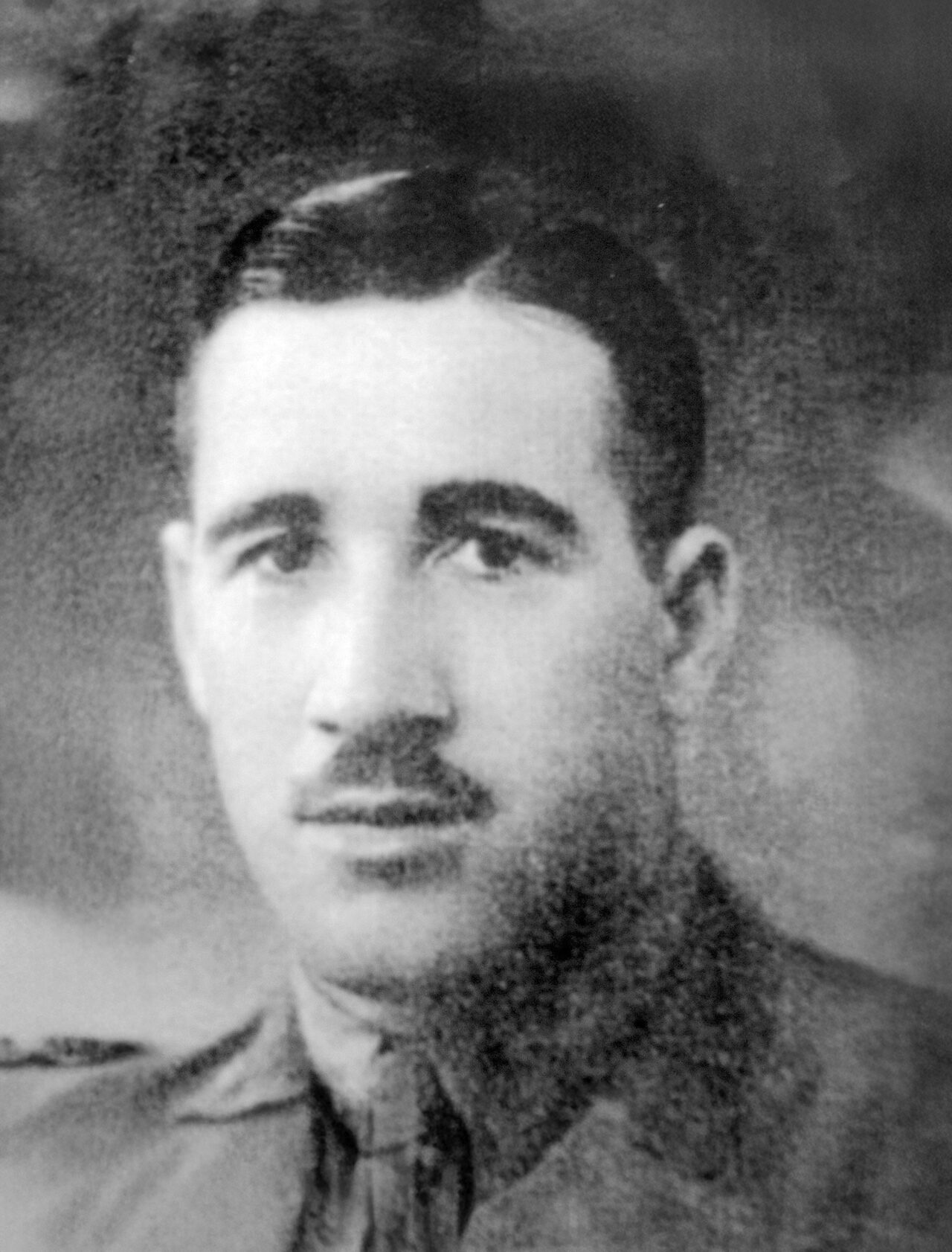
Captain Alston Gregg, deputy to Colonel Dr Colin Anderson.
A Squadron 24th Gwydir Regiment:
Lt. Neville Cole, Sgt Duncan Anderson, Cpl Bill Hyem, Alex Nelson, Troopers Eric Carroll, Herman Carroll, Bill Coddington, Victor Coe, Doug Erratt, John Garrard, Sam Ireland, Len Livingstone, Joe Louis, Jim Power, Bob Pritchard, Bert Pryor, Gordon Sefton, Erroll Urquhart, John Walker and Frank Witts.
Three members of this squadron served with the Northern Australian Observers Unit known as Nackeroos or Curtin’s Cowboys – Alex Nelson, Noel Collier and Cleve Pryor.
Sadly, some members of the Gunnedah ALH Squadron and A Squadron 24th Gwydir Regiment lost their lives – Captain Alston Gregg (killed in action, January 14, 1942), Gunner George Sefton (POW Sandakan, April 14, 1945), Private John Garrard (POW Sandakan, June 7, 1945), Sgt Ted Henderson (RAAF killed in action, September 16, 1942), Pte James Power (AIF, killed in action. September 16, 1942), PO Laurence Heath (RAAF, killed in action, August 10, 1944).
In November 1943, the Gunnedah branch of the Returned Services League went against the wishes of its parent body by voting ‘to admit members of the Militia who had seen service in a defined war zone and that league headquarters be notified immediately of its decision’.
Shortly afterwards the secretary of the local sub-branch of the League, Mr HJ Grace, was advised by headquarters that this decision was ‘contrary to the ruling of the State Council and any such membership admitted to the League headquarters would not be acceptable until the decision of congress was reversed’.
The Gunnedah sub-branch was one of several branches of the League to decide to admit militia members to their membership.
After the war, on May 1, 1948, the regiment was reformed, adopting the title of Hunter River Lancers Armoured Regiment, the 12th representing the old New England ALH unit in association with 24 ALH. The 16th represented the original Hunter River ALH.
On October 30, 2004, in a grand parade to the showground, the 12/16th Hunter Rivers Lancers exercised its right to Freedom of the City proclaimed in 1989. The 12 represents the old New England Australian Light Horse unit in association with 24
ALH.
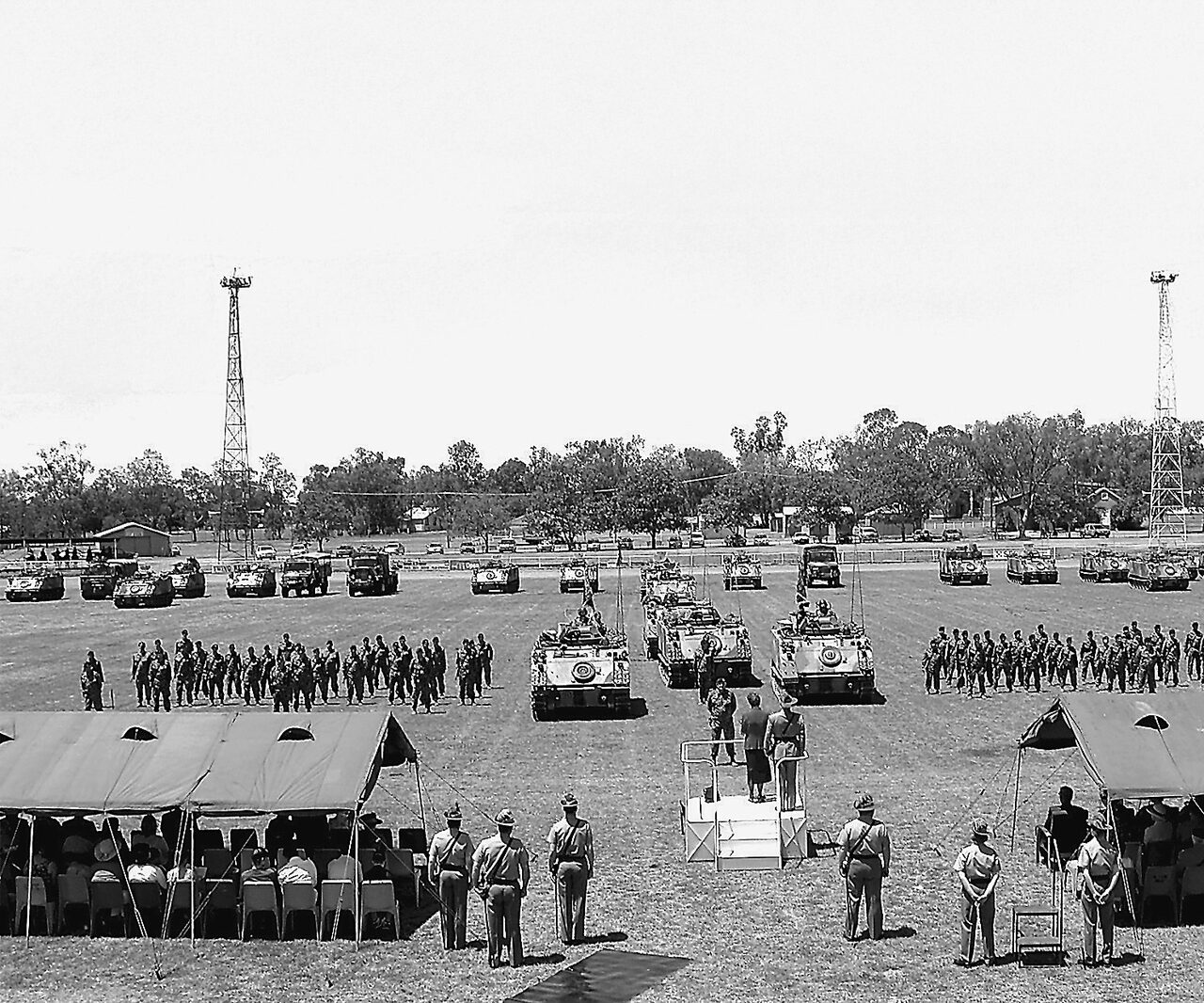
Hunter River Lancers spectacular at Gunnedah Showground on October 30, 2004, when the regiment exercised its right to Freedom of the City proclaimed in 1989. The 12th represents the old New England Australian Light Horse unit in association with 24 ALH.
To order photos from this page click here